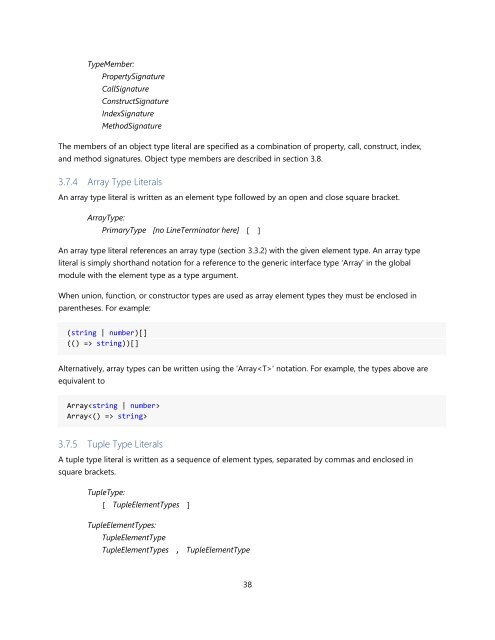TypeScript Language Specification v1.5
TypeScript Language Specification v1.5
TypeScript Language Specification v1.5
Create successful ePaper yourself
Turn your PDF publications into a flip-book with our unique Google optimized e-Paper software.
TypeMember:<br />
PropertySignature<br />
CallSignature<br />
ConstructSignature<br />
IndexSignature<br />
MethodSignature<br />
The members of an object type literal are specified as a combination of property, call, construct, index,<br />
and method signatures. Object type members are described in section 3.8.<br />
3.7.4 Array Type Literals<br />
An array type literal is written as an element type followed by an open and close square bracket.<br />
ArrayType:<br />
PrimaryType [no LineTerminator here] [ ]<br />
An array type literal references an array type (section 3.3.2) with the given element type. An array type<br />
literal is simply shorthand notation for a reference to the generic interface type 'Array' in the global<br />
module with the element type as a type argument.<br />
When union, function, or constructor types are used as array element types they must be enclosed in<br />
parentheses. For example:<br />
(string | number)[]<br />
(() => string))[]<br />
Alternatively, array types can be written using the 'Array' notation. For example, the types above are<br />
equivalent to<br />
Array<br />
Array string><br />
3.7.5 Tuple Type Literals<br />
A tuple type literal is written as a sequence of element types, separated by commas and enclosed in<br />
square brackets.<br />
TupleType:<br />
[ TupleElementTypes ]<br />
TupleElementTypes:<br />
TupleElementType<br />
TupleElementTypes , TupleElementType<br />
38


















